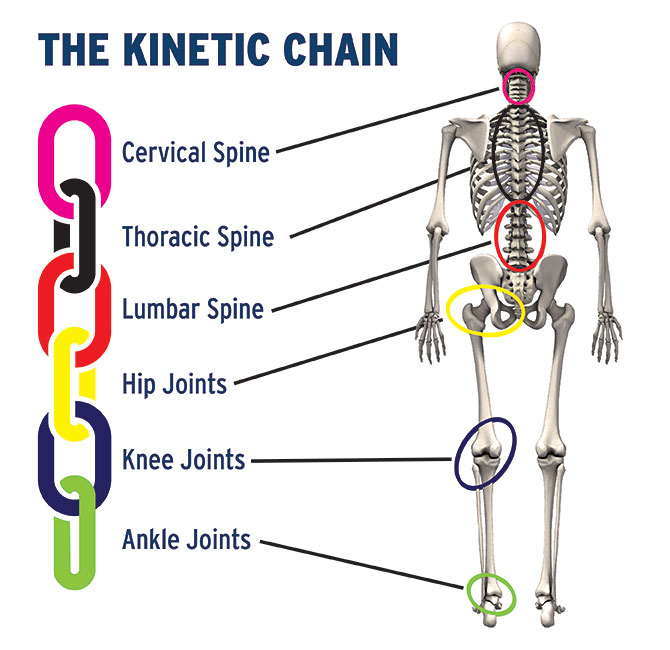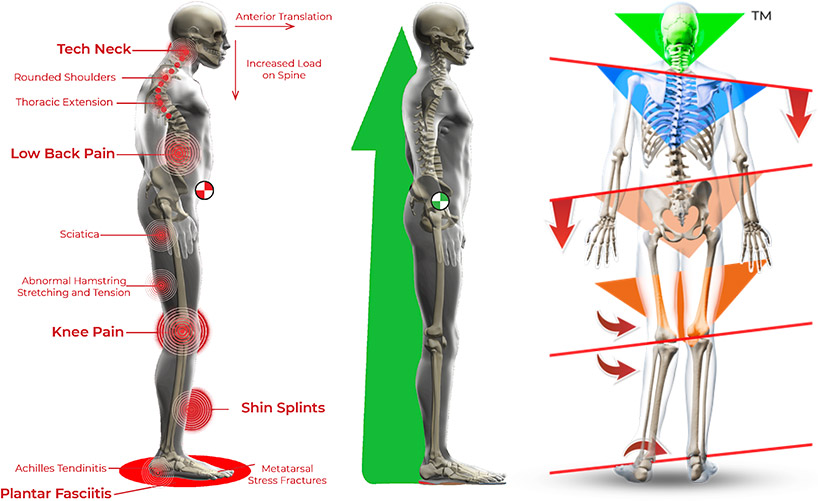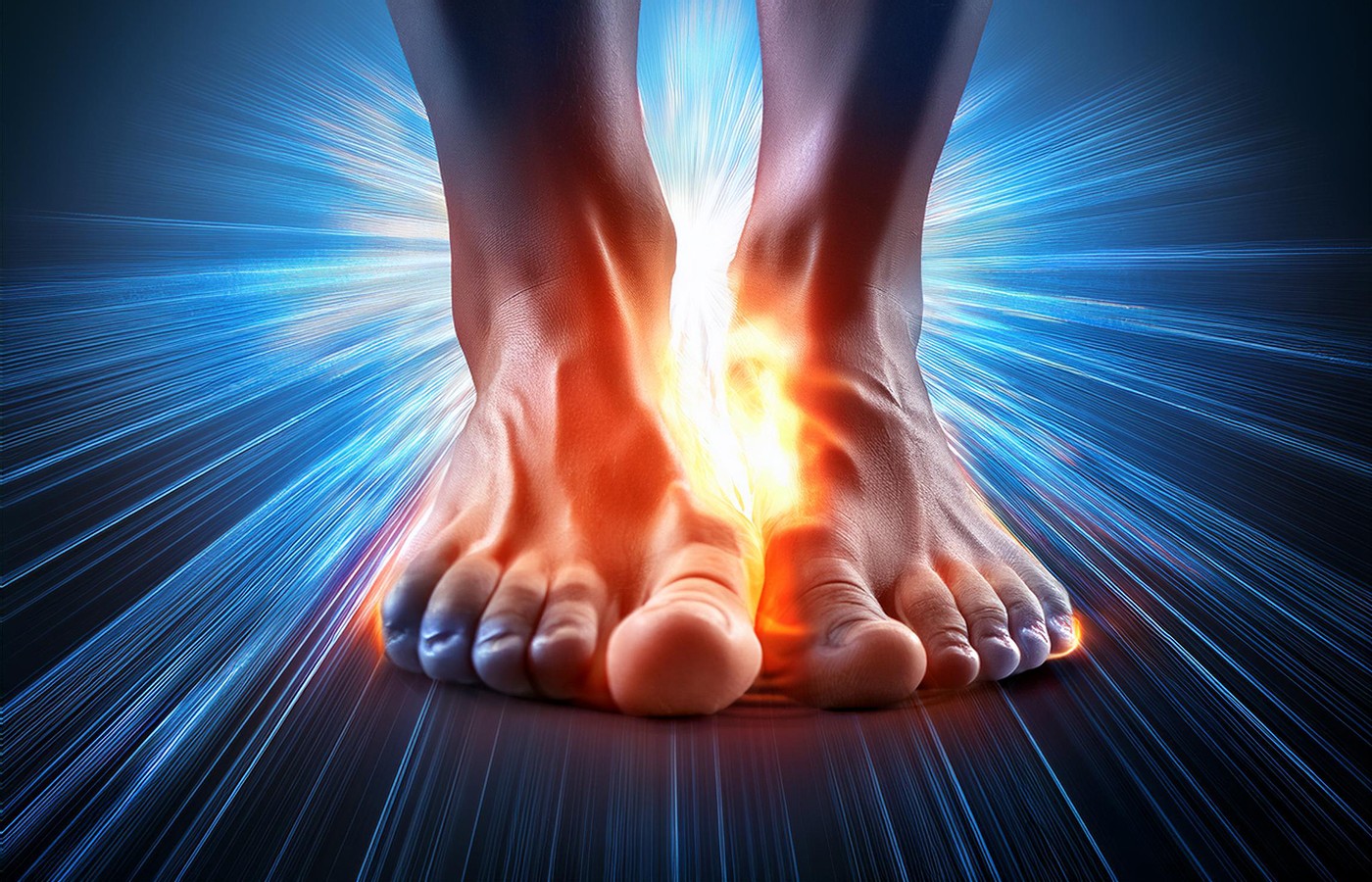New York's highest court of appeals has held that no-fault insurers cannot deny no-fault benefits where they unilaterally determine that a provider has committed misconduct based upon alleged fraudulent conduct. The Court held that this authority belongs solely to state regulators, specifically New York's Board of Regents, which oversees professional licensing and discipline. This follows a similar recent ruling in Florida reported in this publication.
The Silent Partner in Whole-Body Health
- While the foot and spine aren't directly connected anatomically, they are linked through the kinetic chain.
- As the arches of the feet naturally fall over time, the percentage of ground shock absorbed decreases. This means more force and shock are moving up the kinetic chain from the heel through the spine.
- Physiotherapy modalities, chiropractic adjustments, flexible orthotics, rehabilitative exercises, ergonomic considerations and more can help correct biomechanical faults.
In general, the average patient who walks through the door of our clinics possesses little knowledge about their bodies and how they work. This is not an alarming observation, considering patients are not taught to understand biomechanics, movement, or the relationship different body parts have with one another.
As youngsters, most people are exposed to the classic medical model where focus is placed only on the area of chief complaint. Patients are not taught to see the big picture.
The foot is connected to the spine, and understanding and explaining that relationship to your patients will set the stage for successful treatment results that last.
The Kinetic Chain

The "kinetic chain" in lower extremity biomechanics and anatomy illustrates how different body parts are interconnected and affect each other's function. While the foot and spine aren't directly connected anatomically, they are linked through the kinetic chain.
The feet are the foundation of the body's movement and posture. When you stand, walk, or run, the alignment and function of your feet can impact the alignment and function of your entire body, including your spine. The figure below shows the critical relationship and links the body parts have as you move from the ankles up to the neck. It’s a symphony of movement with the feet as the conductors.
The Feet Are the Foundation
The kinetic chain engages with the first step in the stance phase of the gait cycle. On average, there are 5 g of force on the calcaneus bone with each heel strike.1 By the time the shockwave reaches the TMJ (in about 10 milliseconds), the force has been dampened to 0.5 g. The force reduction is important, as it decreases the stress on the joints and soft tissues. The three functional arches of the foot are responsible for absorbing and dispersing 30% of the ground shock.
Another way of looking at this is it has been estimated that every pound of body weight exerts up to three pounds of force that the feet must absorb when walking. If a person weighs 200 lbs., the force on the feet will be up to 600 lbs. It’s interesting and clinically relevant information, because the feet and arch integrity are key to how each person's kinetic chain will function.

Most Patients Have Flat Feet
The lateral longitudinal, medial longitudinal, and transverse (metatarsal) arches show signs of collapse after the age of 6-7. It has been observed that more than 90% of patients have either mild, moderate, or severely hyperpronated feet. Of those remaining, some have healthy feet or are hyper-supinating (rolling out on their feet). Seventy-seven percent of those patients have moderate to severe foot hyperpronation.
As the arches fall, the percentage of ground shock absorbed decreases. This means more force and shock are moving up the kinetic chain from the heel through the spine.
The flat feet drop toward the floor, and the tibia and femur internally rotate, placing excessive stress on the medial knee and hip. The pelvis tilts anteriorly, translates forward, and tilts towards the side of the flatter foot.
The spine has a compensatory lumbar scoliosis with the apex towards the flatter foot, while the thoracic spine has a scoliosis towards the opposite side, tilting the shoulders so the head can stay straight.
A 2019 study2 found that abnormal foot pronation can change the timing and intensity of lumbopelvic muscle activation. These changes may predispose people to develop secondary dysfunctions, such as plantar fasciitis, Achilles tendonitis, knee meniscus, hip labrum tears, hip arthritis (DJD), and others.
The Feet Are the Silent Partner
We do observe patients who have common foot ailments like plantar fasciitis, heel spurs, bunions, and neuromas. However, most of the patients who present to our chiropractic clinic have feet that are not experiencing pain. These folks have hyperpronated feet, but due to the kinetic chain involvement, they have pain elsewhere. It might be the knees, hips, or lower back, but their feet “feel fine.”
Don’t forget to check the feet so the origination of the biomechanical stress can be identified and addressed. Don’t let someone’s lack of pain prevent you from finding out some very crucial information.
Supporting the Foot-Spine Connection
Once we understand the key players that are creating biomechanical faults in the kinetic chain from the ground up, we can take measures to support, improve, and enhance the process.
- Utilize the appropriate physiotherapy modalities to address the patient’s symptoms. The patient’s current state of inflammation, muscle spasms, edema, etc., will dictate what you use. We have so many amazing therapies to utilize: cold laser, shockwave therapy, US, EMS, etc.; take your pick.
- Chiropractic adjustments to the appropriate bones help to re-establish joint stability and healthy movement. Hyperpronators and hypersupinators have discernable subluxation patterns, and patients reliably fall within those patterns. We can see these patterns from the feet up to the neck and TMJ. This helps us cover all of the joints that are part of the dysfunctional biomechanics, so we can effectively address the whole picture.
- Support the feet with custom-made, three-arch, flexible foot orthotics. Since the feet are the body's foundation, balancing them out will help the rest of the body follow suit.
- Support the other structures along the kinetic chain using therapeutic elastic sports tape, braces, or supports to the appropriate areas.
- Use rehabilitative exercises that will help to stretch and strengthen when the time is right.
- Ergonomic considerations should be addressed for the patient’s desk and workstation at the office and their home. Driving and sleeping positions may also need to be addressed.
While there isn't a direct physical connection between the foot and spine, they are functionally connected through the kinetic chain, and issues in one area often manifest as problems in the other. Summing it all up, if someone has issues with foot biomechanics, such as overpronation or supination, it can create misalignments or compensations further up the kinetic chain, potentially leading to problems in the ankles, knees, hips, and spine.
References
- Hyland JK. “Musculoskeletal Shock: Causes and Prevention,” 1980.
- Yazdani F, Razeghi M, Karimi MT, Salimi Bani M, Bahreinizad H. Foot hyperpronation alters lumbopelvic muscle function during the stance phase of gait. Gait Posture, 2019 Oct; 74:102-10.



